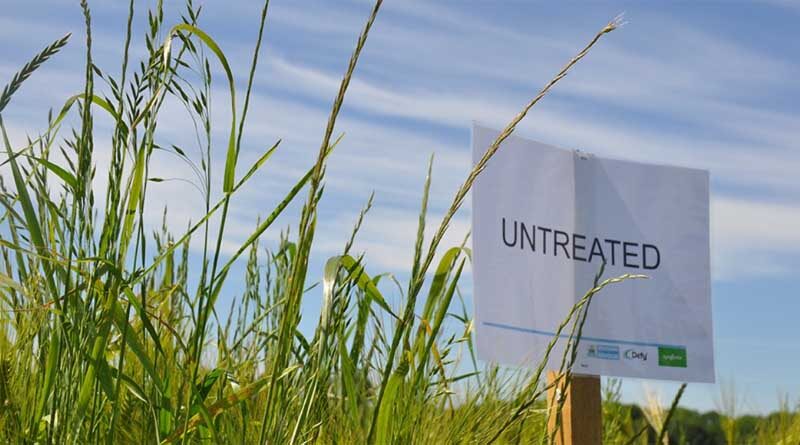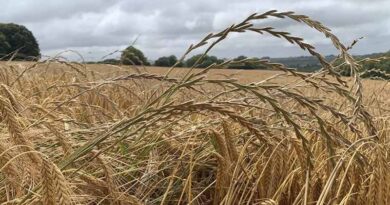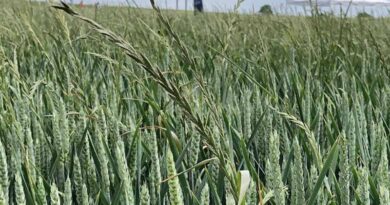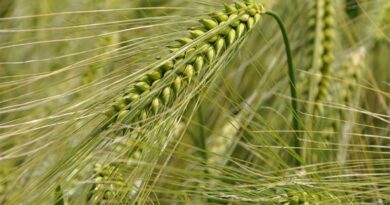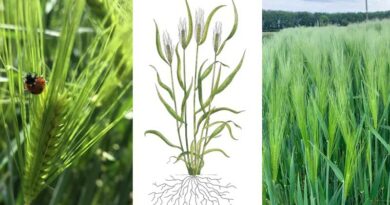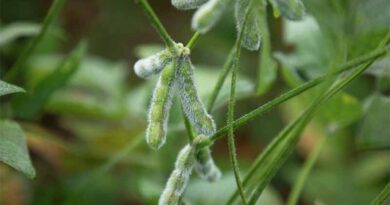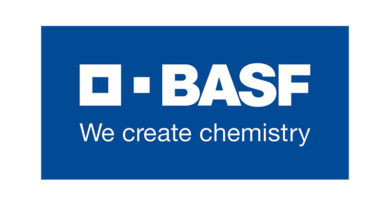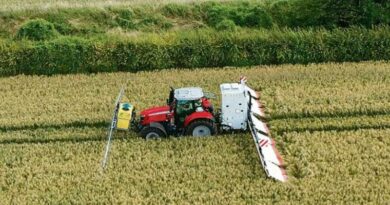Trials show hybrid strategy boosts ryegrass reduction
20 August 2021, UK: Underpinning a robust herbicide programme with the grass weed suppression ability of hybrid barley can give 10% greater reduction in resistant ryegrass compared with growing winter wheat. Syngenta trial results this summer have shown the combined integrated approach giving levels of weed reduction by up to 95-98%.
Conducted at Syngenta’s Innovation Centre in Staffordshire, on difficult to control ryegrass with RRR target site resistance to ALS (sulfonylureas) and ACCase (‘fop’ and ‘den’) herbicides, the trial assessed surviving ryegrass head numbers in five varieties of hybrid barley, two varieties of conventional two-row winter barley, two varieties of conventional six-row winter barley, and two varieties of winter wheat.
All varieties were drilled early, in mid-September, to purposely exacerbate the ryegrass pressure. Each variety was then either left untreated or received a pre-emergence application of 5.0 l/ha Defy + 0.6 l/ha flufenacet/diflufenican, a peri-emergence application of 2.0 l/ha flufenacet/pendimethalin, or these same herbicides in a combined pre- and peri-emergence programme.
Also Read: Verdesian rapidly expands into India with new products and experienced people
At the end of March, each of these treated and untreated plots was then either over-sprayed with 0.82 l/ha of the contact-acting graminicide, Axial Pro, or left without a spring graminicide.
Commenting on the findings, Syngenta area manager, Pete Hawkins said: “Unsurprisingly, the greatest ryegrass reductions tended to be in the plots where the full pre-emergence plus peri-emergence plus spring herbicide programme was applied.
“However, what was particularly interesting was, even with this robust programme, and despite this being an extremely high-pressure site with over 300 ryegrass heads per metre squared, clear differences between the levels of ryegrass reduction were still apparent between the different crop types.
“While 85% ryegrass control was achieved with the full programme in the winter wheat and in the conventional two-row winter barley, and 90% was achieved in the conventional six-row winter barley, this increased to between 95% and 98% control in the hybrid barley.
“This was with the winter wheat drilled at 350 seeds per metre squared and the conventional winter barleys drilled at 325 seeds per metre squared. By comparison, the hybrids were drilled mainly at 200 or a maximum of 250 seeds per metre squared. Even where one of the hybrids, SY Kingsbarn, was drilled at a purposely low 100 seeds per metre squared to simulate poor crop establishment, this still gave 90% ryegrass reduction.
“With lower weed pressure, we have seen previously that hybrids can have a greater impact in terms of percentage reduction.”
Pete suggests when dealing with a tough ryegrass population, it is important to use every management method available – including cultural, varietal and chemical – with delayed drilling being critical.
He continued: “The normal window for drilling hybrid barley is mid-September to mid-October. However, farm experience has shown this can be extended until the end of October, and just beyond, if conditions are suitable. This site was drilled on 15 September. If drilling had been pushed to the end of October that would have given an extra six weeks for grass weeds to have been controlled in stale seedbeds. Field establishment is the key to success, so the use of increased seed rates may be appropriate if establishment is expected to be compromised.”
Commenting further, Sarah Hughes, Syngenta hybrid barley marketing manager, said it was farmers who originally noticed that hybrid barley had competitive effects against certain grass weeds. Over the last decade or so, she said Syngenta has researched its effects against black-grass, ryegrass and certain types of brome.
Sarah added: “As well as examining the inherent competitive ability of hybrid barley against certain grass weeds, we have also seen that increasing its seed rates from 200 to 250 seeds per metre squared tends to give greater grass weed suppression.
“One of the key points about suppression from a crop is, it is non-chemical, and it is independent of the herbicide resistance status of the field. Fewer ryegrass survivors also means less seed return, which provides a benefit for following crops.
“In this trial, we could see with the conventional two-row winter barley that the ryegrass was starting to pull the crop down. The most competitive crop was hybrid barley. The least competitive crop was winter wheat.
“The other benefit of modern hybrid barleys is improved grain quality: hybrid barleys are now in the top 75% for specific weight on the AHDB Recommended List,” added Sarah.

